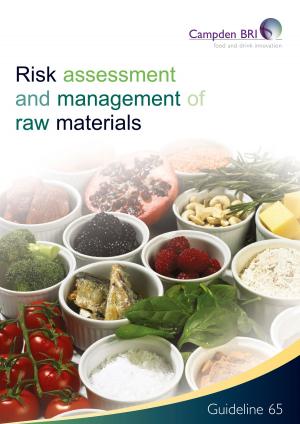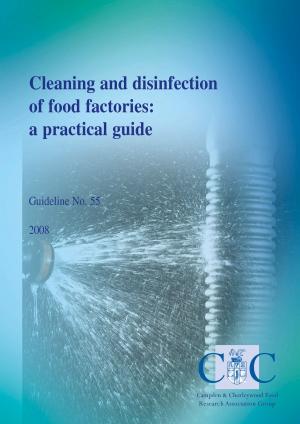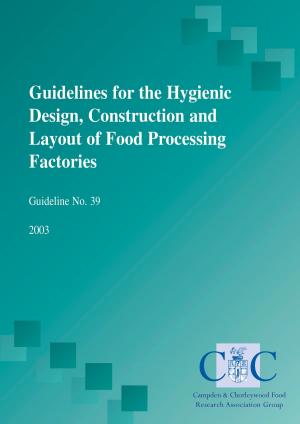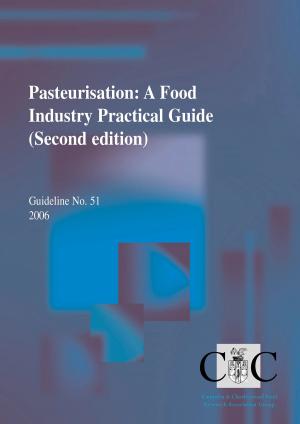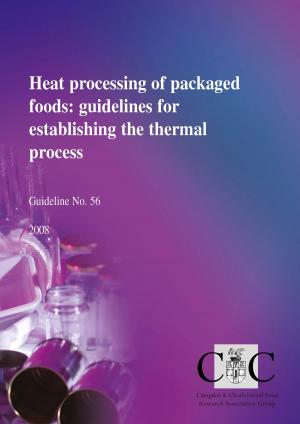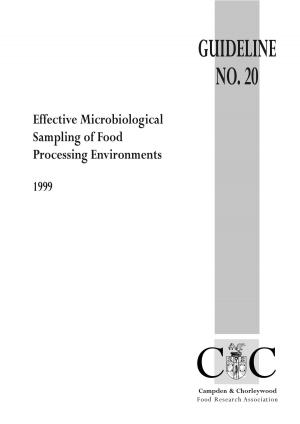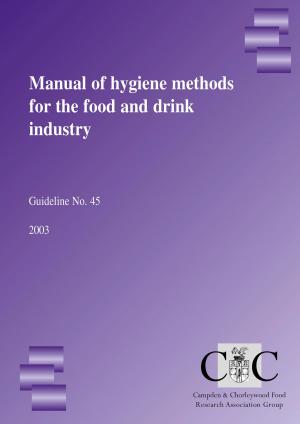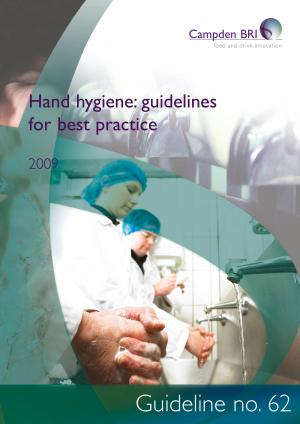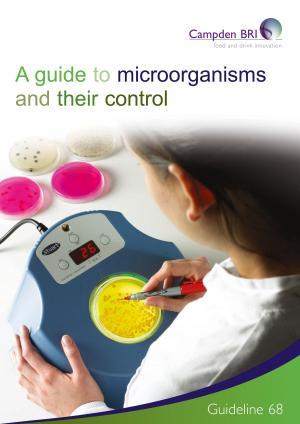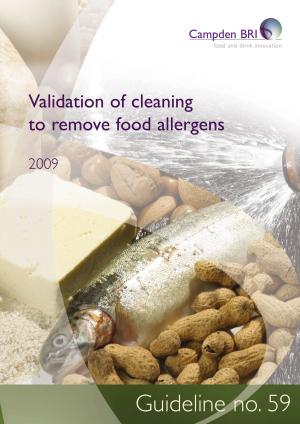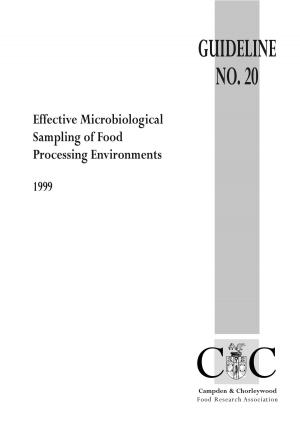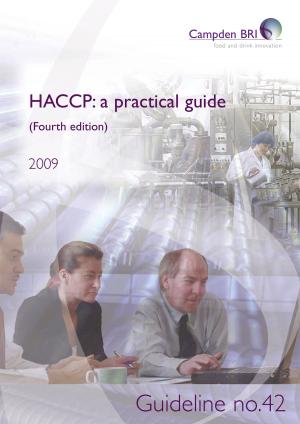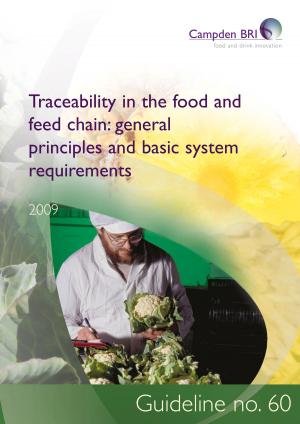Campden Bri imprint: 13 books
by Mrs Sue Emond
Language: English
Release Date: December 16, 2011
Language: English
Release Date: December 16, 2011
Most food raw materials have potential hazards associated with them - be they chemical, microbiological or physical. This guideline provides specific guidance on the application of risk assessment techniques to identify, evaluate and control hazards associated with raw materials in a food, drink or...
by Dr Karen Middleton
Language: English
Release Date: December 16, 2012
Language: English
Release Date: December 16, 2012
Ensure that your factory is cleaned to the highest possible standard by planning when and how to clean and which cleaning chemicals to use. The principles outlined in this guideline are applicable to all sectors of the food and drink industry; they are aimed at those with management responsibility...
by Dr. John Holah
Language: English
Release Date: December 16, 2011
Language: English
Release Date: December 16, 2011
Get factory layout right first time with the help of practical guidance form food and construction industry specialists. This particular guide looks at the issues associated with building, adapting or refurbishing a food factory as a whole. In a step-wise manner, it addresses issues ranging from site...
by Mrs Joy Gaze
Language: English
Release Date: December 16, 2011
Language: English
Release Date: December 16, 2011
Adopt best practice in the use of pasteurisation with food and drink products to help assure food safety and maximise product quality. This practical guide explains the principles of pasteurisation and considers its use in the context of a range of manufacturing options in relation to product pH,...
by Mr Nick May
Language: English
Release Date: December 16, 2011
Language: English
Release Date: December 16, 2011
Ensure that your products receive an adequate heat process and that their safety and quality is optimised. Decisions on heat processing regimes are required for all new products, as well those in which there has been a change in formulation, manufacturing procedures or packaging type or shape. Routine...
by Dr. John Holah
Language: English
Release Date: December 16, 2011
Language: English
Release Date: December 16, 2011
Adopt a structured approach to identifying environmental sources of microbial food contaminants, as a means of promoting food safety. Microbial contamination of food products can arise not only from the product itself (e.g. raw materials, ingredients) but also from the environment - during processing,...
by Dr. John Holah
Language: English
Release Date: December 16, 2011
Language: English
Release Date: December 16, 2011
Adopt standardised methods of taking environmental samples for hygiene testing of surfaces, people, packaging, air and process water. The adoption of standardised protocols throughout the food and drink industry will lead to additional confidence in the validity of hygiene test results and help to...
by Dr Debra Smith
Language: English
Release Date: December 16, 2011
Language: English
Release Date: December 16, 2011
Ensure that your hand washing facilities and procedures are optimised. Hands are one of the major sources and routes for cross-contamination in the food industry. Reducing cross-contamination is key in the production of microbiologically safer, higher quality food. Hand hygiene policies and the facilities...
by Dr Greg Jones
Language: English
Release Date: February 27, 2012
Language: English
Release Date: February 27, 2012
Details of the key growth characteristics of individual microorganisms and microbial groups - at your fingertips in a series of one-page summaries. Preliminary sections in the guideline tabulate microorganisms of concern by food type, and there is also a section on pasteurisation and other heat treatments....
by Dr Helen Arrowsmith
Language: English
Release Date: December 16, 2011
Language: English
Release Date: December 16, 2011
Ensure that the cleaning procedure you use to remove food allergens is effective. This guideline looks at the steps that have to be taken to demonstrate that the cleaning mechanisms used are effective - it does not discuss cleaning per se, but looks at what tests need to be done after the cleaning...
by Dr. John Holah
Language: English
Release Date: December 16, 2011
Language: English
Release Date: December 16, 2011
Adopt a structured approach to identifying environmental sources of microbial food contaminants, as a means of promoting food safety. Microbial contamination of food products can arise not only from the product itself (e.g. raw materials, ingredients) but also from the environment - during processing,...
by Mr Robert Gaze
Language: English
Release Date: December 16, 2011
Language: English
Release Date: December 16, 2011
Assure the safety of your food products by adopting HACCP. This guide combines a clear explanation of the principles of HACCP (Hazard Analysis and Critical Control Point) with sound practical advice on how to approach and implement HACCP. It particularly focuses on the increasing importance of pre-requisites, and the need to document decisions regarding hazard and risk analysis.
by Dr Chris Knight
Language: English
Release Date: December 16, 2011
Language: English
Release Date: December 16, 2011
Ensure that you have a robust system in place that identifies the source (time and place) of all incoming materials, records how they were mixed, and identifies when and where they were dispatched, so that appropriate action can be taken in the event of a problem. This guideline outlines the general...
